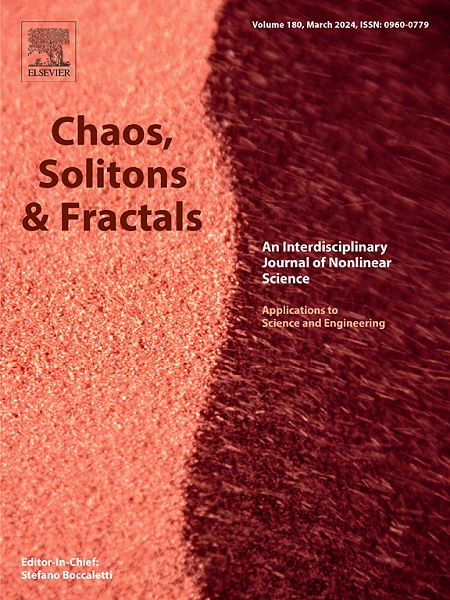Effects of network structure and node dynamics on synchronization with time delays
IF 5.3
1区 数学
Q1 MATHEMATICS, INTERDISCIPLINARY APPLICATIONS
引用次数: 0
Abstract
The synchronization behavior of neuronal networks is central to the functionality of the nervous system and is influenced by factors such as network topology, node dynamics, and time delays. This study investigates the impact of time delays on the synchronization behavior of chemically synaptic coupled neuronal networks, with a focus on analyzing changes in synchronization stability under different time delays and their underlying mechanisms. Through master stability function (MSF) analysis, we found that only networks with homogeneous degrees possess the same synchronization manifold, and can achieve stable synchronization under appropriate time delays. Numerical simulation results indicate that heterogeneous networks can also synchronize under suitable delays. By combining phase response curve (PRC) analysis with node dynamics, we revealed that different phase stimuli lead to variations in the firing periods of nodes in the network, and these periods changes are key to whether the network can synchronize under time delay. The comparison between neuronal firing characteristics and PRC values further confirmed this conclusion. These findings provide theoretical support for understanding the synchronization mechanisms in neural networks and offer new insights into synchronization disorders in neurological diseases.
网络结构和节点动态对时滞同步的影响
神经元网络的同步行为是神经系统功能的核心,受到网络拓扑结构、节点动态和时间延迟等因素的影响。本研究探讨了时间延迟对化学突触耦合神经元网络同步行为的影响,重点分析了不同时间延迟下同步稳定性的变化及其内在机制。通过主稳定函数(MSF)分析,我们发现只有具有同质度的网络才具有相同的同步流形,并能在适当的时间延迟下实现稳定的同步。数值模拟结果表明,异构网络也能在适当的延迟下实现同步。通过将相位响应曲线(PRC)分析与节点动力学相结合,我们发现不同的相位刺激会导致网络中节点的发射周期发生变化,而这些周期变化是网络能否在时间延迟下同步的关键。神经元发射特征与PRC值的比较进一步证实了这一结论。这些发现为理解神经网络的同步机制提供了理论支持,并为研究神经系统疾病中的同步障碍提供了新的视角。
本文章由计算机程序翻译,如有差异,请以英文原文为准。
求助全文
约1分钟内获得全文
求助全文
来源期刊

Chaos Solitons & Fractals
物理-数学跨学科应用
CiteScore
13.20
自引率
10.30%
发文量
1087
审稿时长
9 months
期刊介绍:
Chaos, Solitons & Fractals strives to establish itself as a premier journal in the interdisciplinary realm of Nonlinear Science, Non-equilibrium, and Complex Phenomena. It welcomes submissions covering a broad spectrum of topics within this field, including dynamics, non-equilibrium processes in physics, chemistry, and geophysics, complex matter and networks, mathematical models, computational biology, applications to quantum and mesoscopic phenomena, fluctuations and random processes, self-organization, and social phenomena.
 求助内容:
求助内容: 应助结果提醒方式:
应助结果提醒方式:


